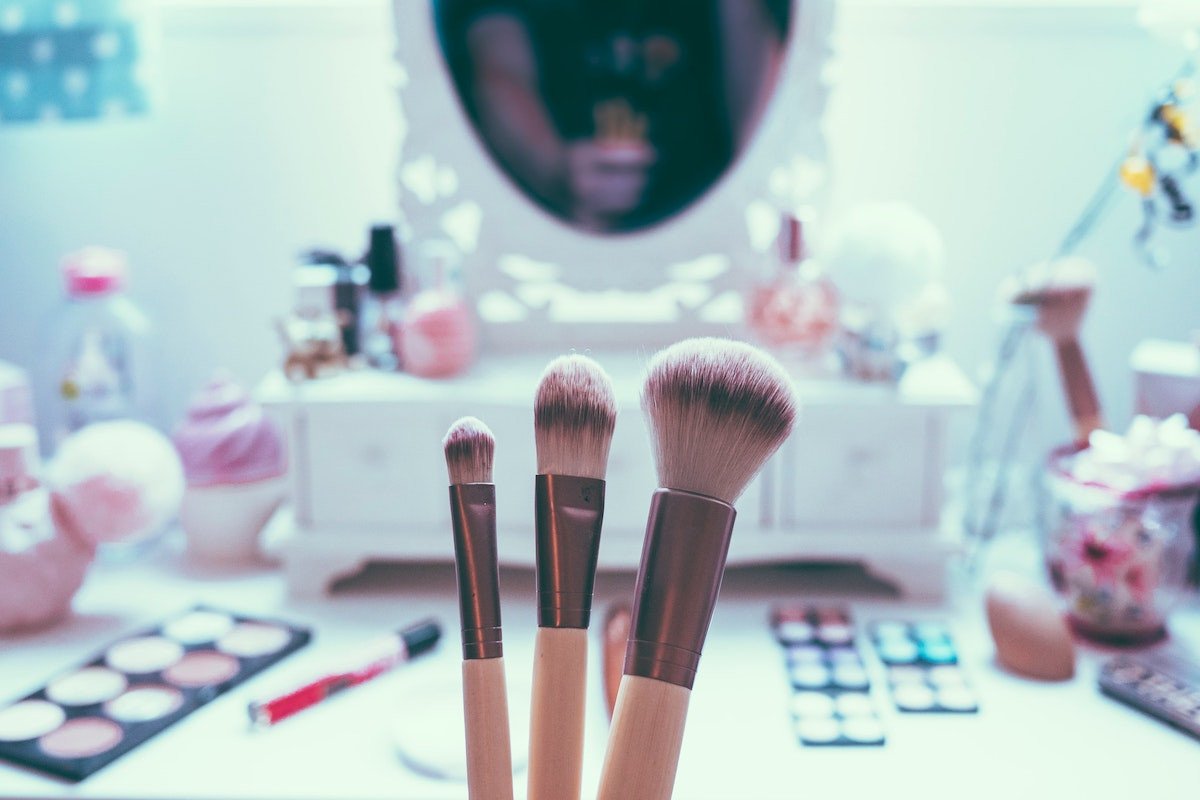"It's just a joke! You need to relax!"
Microaggressions. The term has become a bit of a buzzword lately. The danger of really buzzy words is that they fall into the abyss of reclamation and re-definition. When this cycle repeats itself, the original meaning of the word is so convoluted, that it's almost lost entirely.
Today we're diving into microaggressions. Specifically, we are talking about what they are, how it feels to experience them, and why it's so important to root them out—especially in the workplace where speaking out can seem too dangerous to do.
Our disclaimer about microaggressions is as follows. Despite the name, there is nothing diminutive or "micro" about microaggressions. They are loud and harmful.
All microaggressions need to be thoughtfully considered—and stopped in their tracks.
What Are Microaggressions?
We might call them "micro" aggressions, but they happen everywhere and their impact can be profound. The term "microaggression" was coined by Harvard professor Chester M. Pierce in the 1970s to describe the
slights and insults he witnessed against Black people. Some people even describe microaggressions as feeling like "death by a thousand papercuts."
A common place for microaggressions to emerge is at work. Yes, the place we spend a majority of our time can also be a place we need to watch out for these slights that can cause mental, emotional, and physical harm to our health. Microaggressions probably play a big role in why only 3% of Black employees reported wanting to return to the office full-time, as compared to 21% of white workers.
But where do these microaggressions come from? Unfortunately, they usually come from our upbringing and they are
biases rooted so deeply you don't even know you have them till you use them in a conversation with a coworker. Whether conscious or unconscious, these biases are harmful.
Each of us is limited to our own unique perspective and just because you're not able to fully understand someone else's experiences all the time, doesn't mean your harmful response gets a "pass." Rather, it's important for all of us to recognize our differences and know that how we choose to respond to our biases is well within our control and what can lead to microaggressions—or not.
Types of Microaggressions
Another professor, Derald Wing Sue Ph.D. of Columbia University, describes microaggressions as "brief and commonplace indignities" in the form of verbal, behavioral, or environmental indignities. He explains that microaggressions come in three forms:
Microassault
A microassault occurs when a person involuntarily engages in discriminatory behavior. A very common example of a microassault is someone telling a racist joke and insisting, "I was only kidding!"
Microinsult
A microinsult is a comment or action that is unintentionally discriminatory. In this case, the aggressor might even think they're being complimentary. An example of this would be complimenting someone on their "good English" or "proper grammar."
Microinvalidation
Microinvalidation occurs when a person's comment undermines or dismisses the experiences of a certain group of people. An example of microinvalidation is saying something like "Racism doesn't exist," or "Well, I don't even see color."
The term microaggression, although most commonly used to describe "micro" assaults on People of Color, also is used to describe slights against all marginalized groups. Groups may experience marginalization and microaggressions due to race,
gender, religion, or sexual orientation.
Finally, Ibram X. Kendi, activist, professor, and author of
How to Be an Antiracist, dislikes the term altogether. Instead, he prefers to call microaggressions by a more apt name, racial abuse. Like many other experts, Kendi explains that there is insurmountable fallout for BIPOC and marginalized groups who endure microaggressions every day.
Microaggressions are on repeat, constantly. They cause frustration, self-doubt, anxiety, feelings of impostor syndrome, and anxiety in their recipients.
Examples of Microaggressions
The most frustrating thing about microaggressions is that they are so commonplace. We recently hosted a
webinar on microaggressions with Felicia Jadczak, co-founder of
She+ Geeks Out. In this webinar, we spoke about microaggressions, the messages they are sending, and the extreme impact they have on marginalized groups who experience them over and over (and over again.)
We asked participants to share some microaggressions they have navigated in the workplace—and the responses were equally shocking, not shocking at all, depressing, and infuriating. Here are a few different types of microaggressions:
Verbal Microaggressions
- The question, "Where are you really from?"
- The question, "What are you?"
- Saying, "Wow, you don't seem gay at all!"
- Saying, "Can I touch your hair?"
- Saying, "You speak so well!"
- Continued misuse of gender pronouns
- Complimenting the use of “good English”
- Telling a thin person they "need to eat a burger"
- Exclaiming that something is "so gay" or "so ghetto"
Behavioral Microaggressions
- Making assumptions based on race, gender, or sexual orientation
- Continued mispronunciation of a name once corrected
- Waiting for the next elevator instead of getting on with someone perceived as "dangerous"
- Mistaking someone for someone else with a similar identity
- Lowered expectations for groups then being surprised by work well-done
- Assuming heteronormativity (ie. assuming a woman has a husband or boyfriend)
- Gender assumptions
- The assumption that a parent or caretaker wouldn't want a better job opportunity
Environmental Microaggressions
- Assigning tasks or roles that reinforce gender stereotype
- Paying White men more than women of color for the same job
- Considering some groups to be more valuable than others based on their ethnicity or class
- Not recruiting or supporting people of color in leadership roles
- Resisting disability accommodation or creating ableist environments only
"Lighten up!" Why Microaggressions Matter
When microaggressions go unchecked, it emboldens the aggressor more. Whether or not the aggressor is acting from conscious or—more commonly—
unconscious bias.
A common refrain, when met with the racist or sexist tones of what a microaggressor is doing is the all-too-familiar, "Lighten up!", "Relax!", or "Why are you so sensitive? It's just a joke."
Because microaggressions are seemingly small and dismissed as such, they can be that much more damaging. As we mentioned, microaggressions are much like "death by 1,000 cuts." While you might be able to brush one, two, or three cuts off (even though you should never have to) everyday slights compound and leave a massive wound.
How to Combat Microaggressions in The Workplace
In this section, we're going to unpack ways to respond to microaggressions and make sure that, if you find yourself guilty of a microaggression, you know how to proceed without defensiveness.
Simply put, think before you speak. Consider carefully before you act. There's usually no reason to ever cross physical boundaries in the workplace, so
DON'T TOUCH ANYBODY'S HAIR.
When You're the Target of a Microaggression
One tough thing about workplace microaggressions is that they are difficult to differentiate from plain old rudeness. Here's the thing. If you feel like you're facing a microaggression, you are.
Don't worry about being "too sensitive" and don't worry about "relaxing." Simply put, you shouldn't be enduring these. In our webinar, Jadczak gave us this
invaluable advice for those on the receiving end of microaggressions.
- It's not your job to teach. If you do feel safe engaging with a microaggressor—maybe when it's a close friend or a valued coworker—you may explain why the comment or action was a microaggression. However, it is not your duty to do so.
- Respond in a way that takes space. In thinking about intent versus impact, create space by addressing what was said versus who the person is. For example, create space by saying, "That comment is not appropriate," rather than, "You're sexist." Additional phrases shared by Jasczak for your consideration: What did you mean by that? Compared to whom? That didn't land the way it was intended—can you explain? And sometimes, Jadczak will respond with a simple "not cool" to make it known that a particular comment or action is inappropriate.
- Tag someone in. Have a partner to help you out. Again, it's not your job to educate the world. Choose a teammate you can engage in a productive conversation. Jadczak will "tag" her business partner to take over a conversation at times when she's feeling drained and not emotionally willing to engage with another person.
Here are some other steps you can take to address a microaggression at work:
1. Address The Microaggression
Before you can address a microaggression, you need to know who you are addressing. Is the microaggression being done by one person who you can confront right away in a one-on-one meeting? Or is the aggression being made by multiple people, which makes it more challenging to address because you'd have to combat a group? Another scenario is when the aggression is being made by a person of influence at work like a manager. You might be afraid to speak up and risk making the situation worst.
If the aggression is being made by one person and it's minor enough that you can confront it in real-time, do that. It's an immediate learning experience and allows the situation to be handled before things escalate at all.
When you address this person, it's always a good idea to keep the tone professional and be specific by stating facts. For example,
"Earlier when you said X I'm sure your intentions weren't to be harmful, but it didn't feel that way to me. In the future, can you not say X about my work?"
A resolution includes a simple apology and a correction of their behavior moving forward. When it's a group of coworkers or a person of influence, move to our next step.
2. Write It Down
When the stakes are a bit higher or the microaggressions are more complex, then it's time to document the microaggression. It's likely that you have a
hostile work environment.
There is no right or wrong way to document these, however, the more detail the better. After a situation, write down what was said, the context of the conversation, when and where it took place, how it made you feel, and what response you would like to see. This can be writing out how you would like to respond or what you would like to see the other person do.
Writing down each microaggression as it occurs and documenting the details about the incident can help you explain the situation when you’re asked to provide specific examples.
3. Talk to HR
In addition to documenting the microaggressions, connect with human resources to let them know what you're going through. Letting them in on the situation can be especially helpful when it comes to severe discrimination and harassment. You don't need to wait for the microaggressions to affect your
psychological safety in the workplace.
When you connect with HR, it's a good idea to set up a confirmed meeting time. You don't need to let them know all the details of your meeting upfront, just request a private 1:1 meeting. In the meeting, share your experience and ask for guidance on how you should handle this. It's a good idea to bring a pen and paper for any notes.
Make sure you leave feeling like you know what you want to do next with a plan of action. Plan to follow up with HR in a few weeks to let them know the progress and any feedback.
4. Update Company Policies
You can also connect with HR about updating company policies to include education and language around microaggressions. Educating the company and employees on what microaggressions are, how the company handles these types of insults, etc. will go a long way in creating a healthier company culture, too.
The Risks and Challenges of Confronting Microaggressions
There is nothing simple about confronting a microaggression. When you're dealing with humans and their conscious or unconscious bias, prejudices, and just regular miscommunications that can easily escalate to crossing boundaries, it can be hard to know if confrontation is the right move. And yes, it's a lot easier to never confront a microaggression than to do something about it because breaking the law
Additionally, there might be a risk of retaliation from your team members, boss, etc. What we've learned in our work at Career Contessa is that feeling safe—both
psychologically and physically at work—matters and can impact your overall engagement, success, and happiness at work. Finding a way to approach the microaggression so that you're comfortable is important and we recommend finding peers, mentors, and or working with a
career coach if you're ever in doubt about what to do.
How Managers Can Respond To Microaggressions In The Workplace
One of the best ways for managers and leaders to respond to microaggressions in the workplace and to their employees is through formal unconscious bias and microaggression training programs as part of their overall diversity, equity, inclusion, and belonging (DEIB) efforts.
Sections that might be included in this type of training are respect, inclusion, allyship, how to be an advocate, and how to spot your own unconscious biases. It's also a good idea for companies to implement formal DEIB policies and to always be thinking about how they can create a psychologically safe work environment for BIPOC employees
If you are a leader, influence the other decision-makers at the company to create and budget for DEIB programs that are not just one-off efforts. They need to be continuous with KPIs and goals to eliminate microaggressions from the workplace.
Attention Microaggresors! What To Do When You've Committed a Microaggression
Nobody wants to be the microaggressor. Mistakes help us grow. Leaning into errors, feeling shame, and soaking up embarrassment are great tools for real, meaningful growth. When someone tags you in a microaggression, here is our three-step process for fixing it—and going forward to do better.
- Listen: Listen to the person on the receiving end of the microaggression. Abandon any defensiveness or dismissiveness and listen with empathy.
- Apologize: Apologize for your comments. If the person on the receiving end has explained why the microaggression was offensive, express gratitude for their time and input.
- Learn: This is where the real growth happens. Dedicate yourself to learning, growing, and acknowledging the reality of those around you.
Other Resources on Microaggressions
Speaking of dedicating yourself to learning, here are some great resources on microaggressions.











